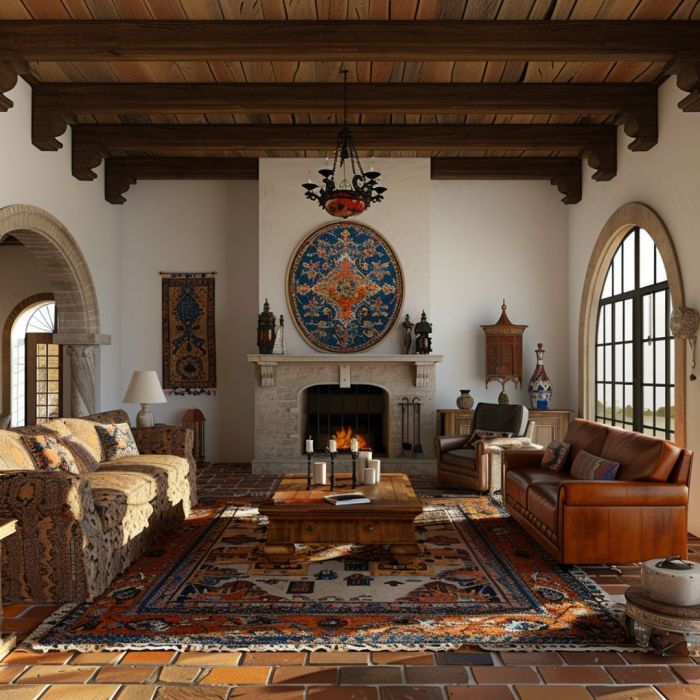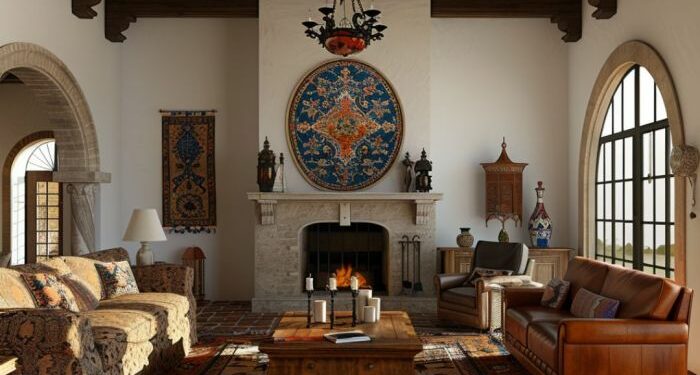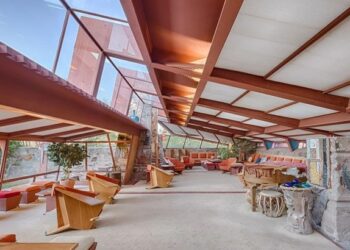Dive into the captivating world of Spanish interior design, where rich history, vibrant colors, and traditional patterns come together to create stunning living spaces. From the iconic textures to the influence of different regions, this topic offers a fascinating glimpse into the heart of Spanish design aesthetics.
As we unravel the key characteristics and modern trends, you'll discover how sustainability and cultural diversity play a role in shaping the interiors of Spanish homes.
Overview of Spanish Interior Design
Spanish interior design is known for its warm and inviting aesthetic, blending elements of traditional and contemporary styles. Key characteristics include intricate tile work, wrought iron details, and rich textures.
Historical Influences on Spanish Interior Design
Spanish interior design has been influenced by a variety of cultures throughout history, including the Moors, Romans, and Visigoths. This diverse blend of influences can be seen in the architecture, furniture, and decor of Spanish homes.
Color Palettes in Spanish Interior Design
Commonly used color palettes in Spanish interior design include warm earth tones such as terra cotta, deep reds, and vibrant blues. These colors reflect the natural landscapes of Spain and create a cozy and inviting atmosphere in the home.
Elements of Spanish Interior Design
Spanish interior design is characterized by a rich combination of elements that give spaces a warm and inviting feel. Let's explore some key components that define this style.
Role of Textures and Materials
In Spanish interior design, textures and materials play a crucial role in creating a cozy and authentic atmosphere. Elements such as exposed wooden beams, terracotta tiles, wrought iron accents, and stucco walls are commonly used to add depth and character to spaces.
These materials not only provide visual interest but also contribute to the overall tactile experience of the design.
Significance of Traditional Spanish Patterns
Traditional Spanish patterns, such as intricate Moorish tile designs, colorful Andalusian textiles, and geometric motifs inspired by Spanish architecture, are often incorporated into interior design to reflect the country's rich cultural heritage. These patterns add a touch of history and charm to spaces, creating a unique and personalized aesthetic.
Typical Furniture Styles
- Spanish interior design often features furniture pieces that are both functional and decorative. Common styles include:
- Baroque-inspired pieces with ornate carvings and luxurious fabrics.
- Rustic furniture made from dark woods like walnut or oak, featuring simple lines and sturdy construction.
- Mediterranean-style furniture with light finishes, curved lines, and intricate details influenced by coastal living.
Spanish Interior Design in Different Regions

Spanish interior design varies significantly across different regions in Spain, each reflecting the unique cultural influences, climate, and geography of the area.
Andalusia
Andalusian interior design is characterized by its Moorish influence, featuring intricate tile work, vibrant colors, and ornate details. The hot climate in Andalusia often leads to homes with open layouts, high ceilings, and cooling elements like tiled floors and courtyard gardens.
Catalonia
Catalan interior design is known for its blend of modern and traditional styles, often incorporating elements like wrought iron, wood, and stone. The cooler climate in Catalonia influences design choices, with a focus on cozy spaces, fireplaces, and warm textures like wool and leather.
Basque Country
Interior design in the Basque Country tends to be more minimalist and industrial, with a focus on natural materials like wood and stone. The rugged terrain and cooler climate in this region contribute to the use of sturdy furniture, earthy tones, and functional design elements.
Modern Trends in Spanish Interior Design
Modern trends in Spanish interior design have been heavily influenced by contemporary design movements, blending traditional elements with sleek and minimalist aesthetics. Sustainability and eco-friendly practices are also becoming increasingly important in modern Spanish interiors.
Incorporation of Traditional Elements
Modern Spanish interior design often incorporates traditional elements such as intricate tile work, wrought iron accents, and wooden furniture. These elements add a touch of authenticity and character to contemporary spaces, creating a unique blend of old and new.
Sustainability and Eco-Friendly Practices
- Using locally sourced materials: Modern Spanish interior designers prioritize using materials sourced locally to reduce the carbon footprint of their projects.
- Energy-efficient lighting: LED lighting and other energy-efficient fixtures are commonly used in modern Spanish interiors to reduce energy consumption.
- Recycling and upcycling: Designers often incorporate recycled or upcycled materials into their projects to promote sustainability and reduce waste.
Outcome Summary
In conclusion, Spanish interior design is a harmonious blend of heritage and innovation, where the past meets the present to create timeless beauty. Whether you're drawn to the warmth of traditional elements or the sleek lines of contemporary design, the allure of Spanish interiors is truly irresistible.
Detailed FAQs
What are the key characteristics of Spanish interior design?
Spanish interior design is known for its use of vibrant colors, intricate patterns, and a mix of traditional and modern elements that create a warm and inviting atmosphere.
How do different regions in Spain influence interior design?
Regions like Andalusia, Catalonia, and the Basque Country each have unique design styles influenced by their climate, geography, and cultural diversity.
Are sustainability practices important in modern Spanish interior design?
Yes, modern Spanish interior design often incorporates eco-friendly practices and sustainable materials to promote a more environmentally conscious approach.













